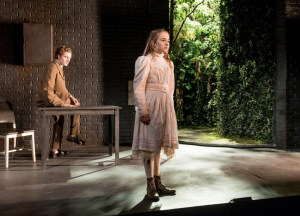
A lot of the words that came up large on my cloud were fairly predictable, but there were some that surprised me. For instance, “love.” I can attribute it to my brief obsession with the short story “If you were a dinosaur, my love,” but my trends chart indicates that while that was when the appearance of the word “love” spiked, it’s also appeared fairly consistently throughout the documents I looked at. This brings me to another one of my special interests while doing this search – science fiction with LGBT+ themes. A lot of the spikes in “love” coincide with the word “queer.” The prominence of words like “story,” “stories,” and “book” indicates that I prefer print media and is also indicative of the way that I searched for these sites: mainly by googling my favorite sf authors and reading articles about them.
A few more trends of interest:
– A few specific phrases from my favorite stories made it onto the infographic: like Breq and Radchaai from Ann Leckie’s Imperial Radch series, and Yuan, one of the characters in Ken Liu’s short story “Seventh Day of the Seventh Moon.”
– If someone asked me what my primary interests in sf were, I would probably say women, cities, theater, and LGBT+ themes, and I was little disappointed at how small some of those terms were.

 I’m very interested in science fiction theater because it’s an opportunity to implicate audience members in futuristic worlds in a way that I don’t think comes across in short stories or novels. However, it also come
I’m very interested in science fiction theater because it’s an opportunity to implicate audience members in futuristic worlds in a way that I don’t think comes across in short stories or novels. However, it also come